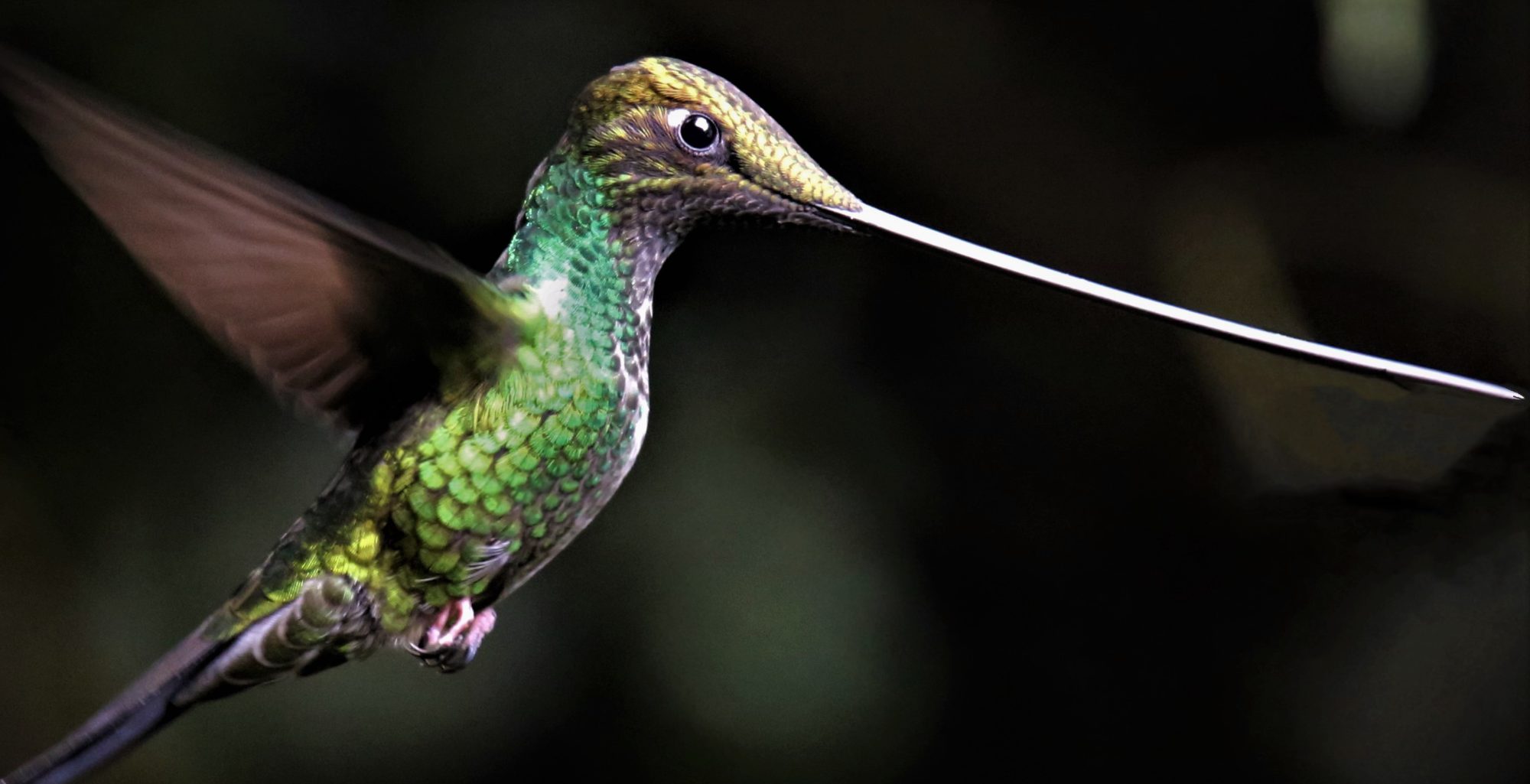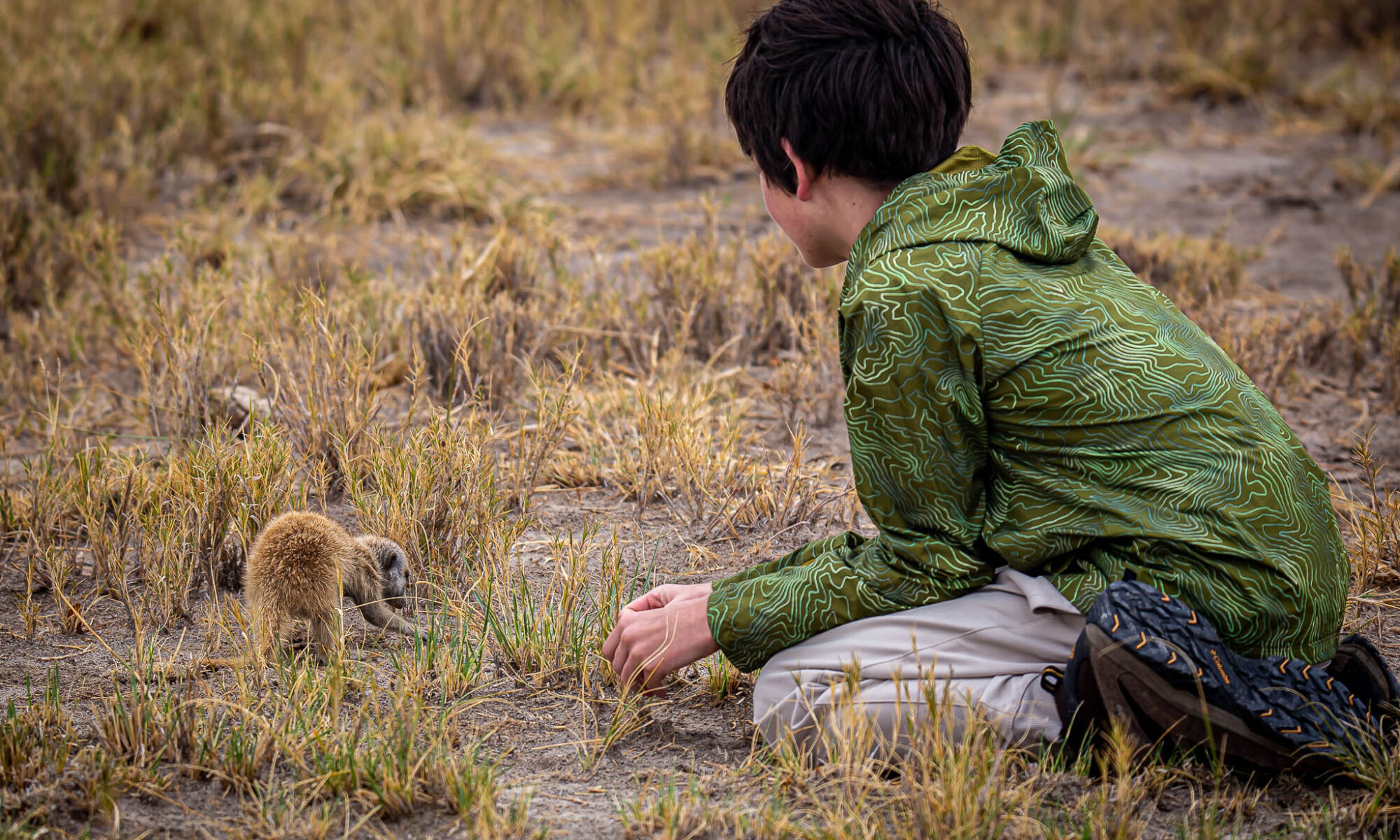When I planned this part of the trip, I was thinking of meerkats (made famous by Timon, in the Disney classic Lion King). We hadn’t seen them before, and I thought at the time, this might be our only time close to the Kalahari Desert where meerkats live. I tend to prefer green and lush, but as long as we were in Botswana, it seemed reasonable to me that we should give it a try. Kim from Extraordinary Journeys said seeing meerkats could practically be guaranteed at Camp Kalahari because they have a habituated mob of meerkats nearby. She warned, it might be a little inconvenient to get there because it involved flying back to Maun, waiting in the airport, and then catching another fifty-minute flight to Camp Kalahari. Kim assured us that it would be a worthwhile addition to the trip. It was!
Camp Kalahari is the less expensive sister camp to the historic Jack’s Camp that sits on the edge of the immense Makgadikgadi salt pan, the remnant of an ancient super-lake that dried up tens of thousands of years ago. This was sure to be a new landscape for me to photograph. I was a little worried that it was going to be too hot. The tents were not air conditioned and, after all, it is called a desert. Technically speaking, it gets too much rain in most years to qualify, by the scientific definition of a desert. The view from the small plane was much less green than the Okavango Delta, but even from seven thousand feet (I am pretty sure of the altitude because I could read the gauges sitting right behind the pilots) you could see plenty of brown vegetation in the sandy soil. We were there at the end of the dry season.
When we landed, we were met by our guide, KG. He explained that the recent rains started to bring the green color back into the landscape. Hopefully, you will see some new plant growth in the photos at the end of the post. KG and I bonded quickly when he said he owned the same camera as I did and also likes to take photographs. It was sunny and hot, but KG said it wasn’t nearly as hot as the previous week. We were lucky. He scheduled the afternoon drive for later that day when the sun would be lower in the sky. The cooling breezes would make the animals a little more active. It was too hot to hang out in our tent until the drive, so we lounged in the shade of the large open-air tent that served as a social gathering place and we took advantage of the self-service bar.
It was there that we met three generations of a family on safari. Like us, they were from the U.S., and, like us, they had this stop on the itinerary primarily for the meerkat experience. The youngest member, Ward, reminded me a little of myself, when I was a child. I told him about my website and said to him, with his mother’s permission, and grandfather’s blessing, that I would be thrilled to include some of his insights here. They seemed interested, but as of yet, I haven’t heard back. The offer still stands. Ward is featured in the photo above and in some of the photos which you can get to by clicking here. As a general rule, I refrain from posting photos of children’s faces, but I have some good ones if grandpa or mom would like them.
Our first drive included a visit to a group of people (called San people by many anthropologists, or Bushmen by others) who were brought in and paid to teach tourists the traditional ways of nomadic hunter-gatherers. I think it was KG who explained; it was a way for the camp owner, Ralph Bousfield, to pay homage to the indigenous people of Botswana. He and his late father, Jack, felt they owed them a debt of gratitude. To me, it was well worth the time spent. It made more sense to me when explained that way, rather than simply being just an exotic tourist attraction. It also made sense that it be a priority to have the experience early in the visit. There is a registered museum at Jack’s Camp that adds to that tribute, and further educates its guests about the people (even before Homo sapiens) who have called the region home. The language of the indigenous people needs to be heard, and Ralph has taken it upon himself to promote it. To an English speaker, it is so different, and it is impossible to write it accurately with Latin alphabet symbols. It has different click sounds that we don’t use, and we don’t have letter combinations that even come close. Fortunately, one of the bushmen could act as a translator. The thing I liked most about the cultural visit was how much fun the people were having introducing us to their ways. Laughter is universal.
Camp Kalahari was smaller and even more laid back than the previous two camps I have written about on this adventure, but that is probably what I like most about it. It gave me more of a chance to talk to KG about photography and what Botswana was like away from camp in his village. I also had a chance to talk to other staff when it was just too hot to do anything but wait in the shade for things to cool down. Sleeping was easy, because by nightfall you needed a blanket to stay warm. We were comfortable there.
In the Kalahari it wasn’t all about making sure we were checking off critters from a list; even animals as cute and charismatic as meerkats. It should never be just that. For me, much of the enjoyment of almost any trip isn’t the destination itself, but the people you meet there and along the way. That has certainly been true in Botswana. I am no literary scholar, but the quote by Ralph Waldo Emerson “Life is a journey, not a destination” is likely so popular because it encourages us to be patient and to accept the challenges that come our way. Certainly it is good to have a destination in mind. We didn’t wander to this remote place. It was a choice. I am happy to say Botswana is a welcoming place because of its people. That is something you might not gather by looking at its landlocked position on a map or by viewing the landscape from an airplane. Being there makes a different impression than looking at satellite images on Google Maps. If you take “try to see it all” as only getting to a destination, you are missing the point. It is more about the journey. I stress there is no bucket list for me. I believe that practice may cause people to focus too much on just checking the destination off their list; possibly missing out on the beautiful opportunities that present themselves as the journey unfolds.
Thanks to all who helped us in Botswana and Kim’s team from Extraordinary Journeys that helped us plan the trip. They did a great job. Next stop Cape Town again.
If I haven’t given you enough history of the camps in this region, it might be worth reading a written interview of Ralph Bousfield from 2020 posted on Natural Selection’s company website by clicking here. I find it interesting. I also believe they are a partner in Africa to Extraordinary Journeys. If you do use EJ, tell them I sent you!


